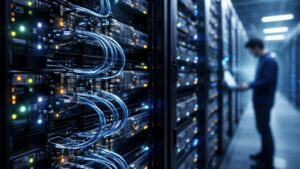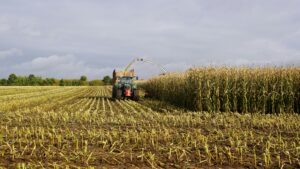The convergence of drone technology and inspection of water infrastructure has changed the way we maintain and safeguard viral water systems. Furthermore, with the infrastructure aging and posing challenges, innovative solutions are necessary. It ensures the reliability and also the safety of the supply networks of water. Drones with sensors and imaging capabilities are becoming a great tool in this field. It offers a new way to look at things and efficiencies in infrastructure management. In this article, we will look at the advantages, applications, advancements, and more of drone technology in water infrastructure.
Advantages of Drone-Based Inspections
Drone technology reflects various benefits when it comes to water infrastructure inspection. In this section, we will look at some of the most impactful benefits that drone technology for water infrastructure inspection offers:
Cost-Effective Inspections
Drone-based inspections can bring the costs of water infrastructure maintenance down. Furthermore, it can reduce the need for scaffolding, cranes, or human inspectors. This cuts labor costs and equipment expenses. Moreover, drone technology also minimizes operational downtime. This is because the inspections are carried out quickly without interrupting the water services. As a result, this cost-efficiency allows for more inspections. So, it leads to issues being patched early on before they become major problems.
Enhanced Safety Measures
Safety stands to be crucial when it comes to water infrastructure inspection and drones provide great improvements in it. They can access locations that are head-to-reach or hazardous, which would be dangerous for human inspectors. It includes water tower tops or underwater pipelines. Furthermore, drones reduce the risk of accidents and injuries from traditional methods. It also reduces liability concerns for water management organizations.
Improved Data Collection and Analysis
Drones equipped with cameras of high resolution and specialized sensors can quickly collect vast and detailed data. Furthermore, this data can consist of visual imagery, 3D mapping of infrastructure, and more. Moreover, advanced software can analyze this data to see any potential issues such as leaks or structural weaknesses. So, this ability allows for accurate assessments and better decision-making in maintenance.
Applications in Water Infrastructure Inspection
Drone technology comes in use for various aspects of water infrastructure inspection. This shows their versatility and effectiveness in different applications. Let’s see some of the most common applications ahead:
Dam and Reservoir Inspections
Drone inspections of dams and reservoirs give unmatched access to these critical structures. Furthermore, drones can easily survey large surface areas, inspect for any spillways, and also monitor water levels with precision. They can also capture detailed images of concrete surfaces and identify if there are any cracks or signs of erosion. Additionally, for underwater inspections, there are specially designed aquatic drones. They can access the submerged structures and sediment buildup giving a comprehensive view.
Water Tower and Tank Assessments
Water towers and storage tanks show unique challenges in inspections. This is owing to their height and confined spaces. Drones are great in these scenarios. They offer a safe and efficient means of external inspection. Furthermore, they can capture images of the tower’s exterior and check for pain deterioration, rust, or any structural issues. Moreover, for internal inspections, specially designed confined space drones can enter tanks. They can give visual data on interior conditions without human interference. So, this approach reduces time and costs as well.
Pipeline Network Monitoring
Drones are changing the methods of pipeline network inspections. This goes especially for extensive water distribution systems. Furthermore, with the use of thermal imaging cameras, drones can detect any underground leaks. This is by seeing the temperature difference in the soil above pipelines. They can also survey large areas quickly to see for any signs of unauthorized construction or encroachment near pipelines. Additionally, for above-ground pipelines, drones can do a visual inspection to check for damage or vegetation growth. So, this aerial perspective gives way to more comprehensive monitoring of pipeline networks. It also prevents water loss and ensures the integrity of the system.
Technological Advancements in Drone Inspection
Using drones for inspecting water infrastructure is showing massive growth with time. They are coming up with new technologies to enhance their capabilities and applications. So, let us see some of those advancements ahead:
AI and Machine Learning Integration
AI and ML are changing drone technology. This is by automating the analysis of data and improving accuracy. Furthermore, these technologies are great in processing vast amounts of visual and sensor data that is captured by drones. It can then identify any potential issues with amazing speed and precision. Moreover, AI algorithms can also have training to recognize any defects or anomalies in infrastructure. So, this integration will not only speed up the process efficiently but also enable proactive maintenance strategies.
Advanced Sensor Technologies
The development of advanced sensors if making the capabilities of inspection drones wider. Furthermore, multispectral and hyperspectral cameras are effective in detecting issues that might not be visible to the naked eye. It includes early signs of degradation or water contamination. Moreover, LiDAR sensors enable the precise 3D mapping of infrastructure. This gives way to an in-depth structural analysis. Additionally, specialized acoustic sensors can even detect leaks in pipelines by listening to the different sounds of water escaping.
Autonomous Drone Systems
The future of water infrastructure is autonomous drone systems. These self-operating drones can perform routine inspections without human touch. It follows a pre-programmed flight path and collects data automatically. Furthermore, autonomous systems can be integrated with the infrastructure management platforms. So, this can give real-time data or alerts. This level of automation not only increases efficiency but also makes sure there is consistency in inspection procedures.
Drone Technology in Water Inspection: Challenges and Future Outlook
Drone technology reflects vast benefits, however, it also brings some challenges along the way. In this section, we will go through some of the main challenges that need to be solved.
Regulatory and Privacy Concerns
The use of drones leads to a lot of regulatory hurdles. Furthermore, regulations can be different for every country or region. So, this makes special permits necessary for drone operations near sensitive infrastructure. Privacy issues can also arise when drones capture visuals of private property during inspections. So, addressing these concerns requires collaboration between drone operators, water management authorities, and regulatory bodies. It will help to get clear guidelines and best practices for drone technology in water infrastructure inspection.
Data Management and Security
The huge amount of data collected by inspection drones can present issues in terms of storage, processing, and security. Furthermore, water management organizations need robust systems. This is to handle the influx of information and ensure it is properly analyzed and secured. Moreover, cybersecurity also comes as a concern as data collected can include sensitive information about the infrastructure. As a result, executing strong data protection measures and secure protocols of communication are essential.
Integration with Existing Systems
Drone technology needs integration with existing management systems to reach its full potential. Furthermore, this integration includes making compatible software platforms that incorporate drone-collected data into current asset management and maintenance planning processes. It also needs training personnel to use and interpret drone-gathered information which can prove to be challenging. With the integration improving, this process will get easier as the benefits of drone technology in enhancing management and decision-making will be realized.
To Sum Up
Drone technology is rapidly changing the landscape of water infrastructure inspection. It shows incredible advantages in efficiency, safety, and data collection. While the challenges remain, the future outlook looks promising. This is with ongoing advancements and increasing integration paving the way for more comprehensive and effective management.
To go deeper into the innovations and strategies of water and wastewater management with industry leaders, join the Industrial Water & Wastewater Management Summit. It will take place on 26-27 September 2024 in Frankfurt, Germany giving rare insights through sessions, panel discussions, case studies, and more. It will also provide you with great networking opportunities leading to you being ahead of the competitors. So, register right away!




